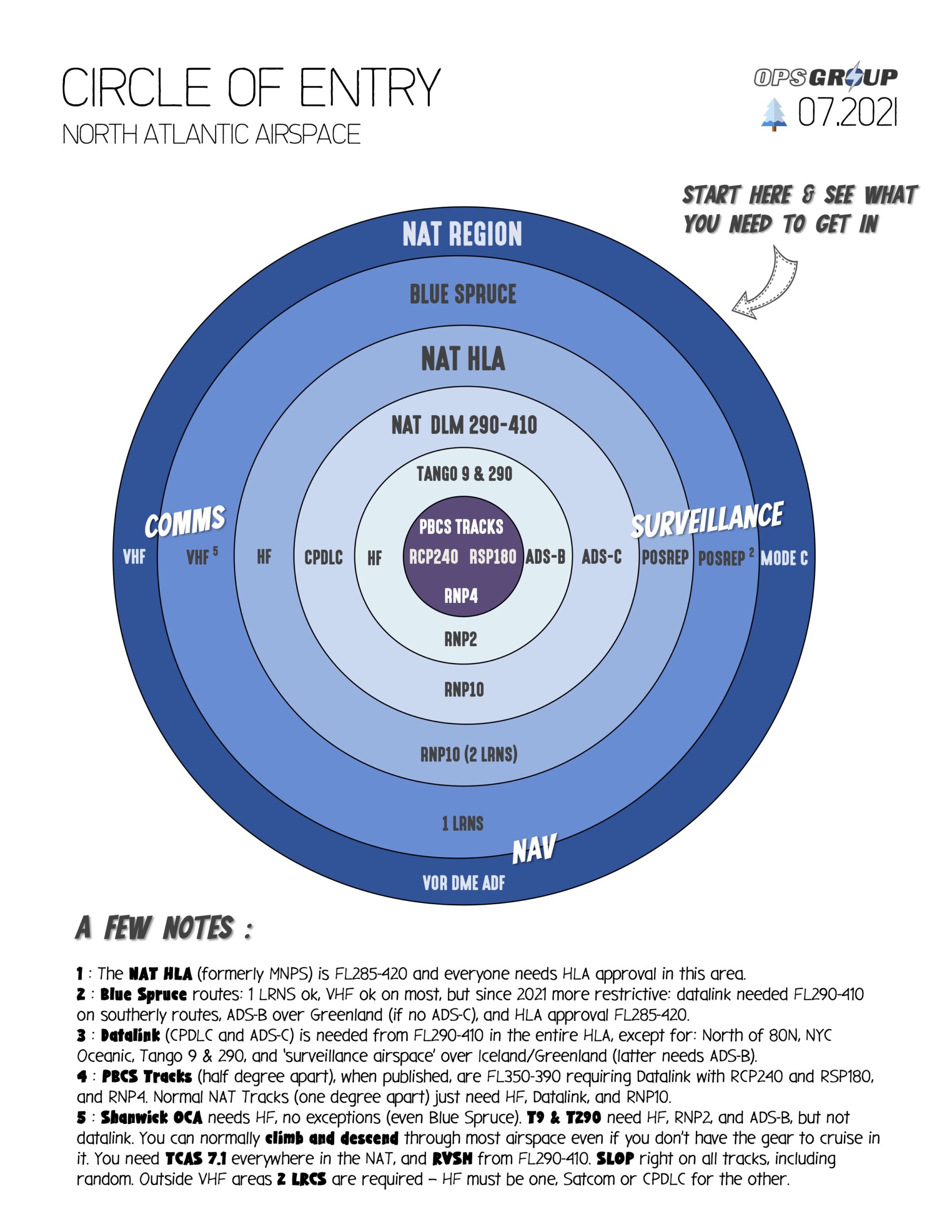Big news from the NAT. From March 1, 2022, FL330 and below will no longer be part of the NAT Organised Track Structure (OTS).
What does this mean?
It means operators will have the flexibility to file random routes at FL330 and below when flying between Europe and North America.
Particularly for operators unable to file routes across OTS tracks with active flight levels, this means much greater flexibility in choosing their own trajectory.
Why is this helpful?
NATS quoted a study which suggested every extra minute over the ocean equates to about £51, or $70. It might not be the most radical change, but it is a step towards further improving the efficiency for operators, and ultimately to reducing fuel burn.
Why now?
It comes down to the introduction of ADS-B. This allows controllers to receive updates every 7-8 seconds instead of every 840 seconds (14 minutes).
What about the rest of the tracks?
This change forms part of NATS 2030 NAT vision, and more improvements can be expected. Unfortunately, it isn’t a direct result of their NAT tracks NIL experiment and abolishment of all the OTS isn’t on the cards anytime soon.
However, studies from the ‘OTS Nil’ trial are being reviewed and there are plans to simulate further OTS Nil on busier traffic days to see if viable, useful, doable…
 What do you need?
What do you need?
If you want to fly at FL330 or below (down to FL285) then remember you are still in the NAT HLA, just not on the OTS, so the same HF, long range nav and comms requirements apply, as do datalink mandates.

This is our NAT Airspace Circle of Entry 2021 – easily check what you need for Nav, Comms and ATC Surveillance depending on which bit of the NAT you will be flying through.
Anything else?
Unfortunately no, that’s the news for now. Any questions on this feel free to direct them to us at team@ops.group
If you want to read the “official” NATS notice then you can do so here. We don’t yet have a reference for the official NAT Docs.
More on the topic:
- More: NAT Changes 2025: No More Blue Spruce Routes
- More: FIRE on the NAT! Where to go in an emergency?
- More: 2025 North Atlantic Plotting & Planning Chart
- More: Greenland NAT Alternates – Major Changes Coming
- More: NAT Ops: Flying the Blue Spruce Routes
More reading:
- Latest: US Ops Update: Privacy, IDs & Safety
- Latest: Belgium airports impacted by another nationwide strike
- Latest: ADC Numbers in South Asia: What You Need to Know
- Safe Airspace: Risk Database
- Weekly Ops Bulletin: Subscribe
- Membership plans: Why join OPSGROUP?











 Get the famous weekly
Get the famous weekly 






Rebecca,
could you please tell us what is the source?
Is there any specific reference into the NAT manual?
Tks
Hi Simone,
The source is NATS itself (which I have now added to the post – should have had that in there). Here as well – https://nats.aero/blog/2022/02/north-atlantic-tracks-at-flight-level-330-and-below-to-be-abolished/
Rebecca, you may want to alert your readers to an important point.
Seems like every time I fly an OTS track at a lower altitude like FL 310 or 320…..l’m cleared to fly the actual OTS. The NAT Doc 007 implies that if you file to fly the coordinates of an OTS track at a lower altitude, you will be cleared along that very route, but your clearance will say “random.” I’ve been flying USA to LHR routes for several months and this keeps happening. This could be a very important distinction for pilots that fly equipment that routinely operates at the lower altitudes (B-767-400).
Cheers
Paul Higgins
Delta Airlines
Thanks for the info Paul – this might hopefully change once the FL330 and below levels are abolished from the OTS system.